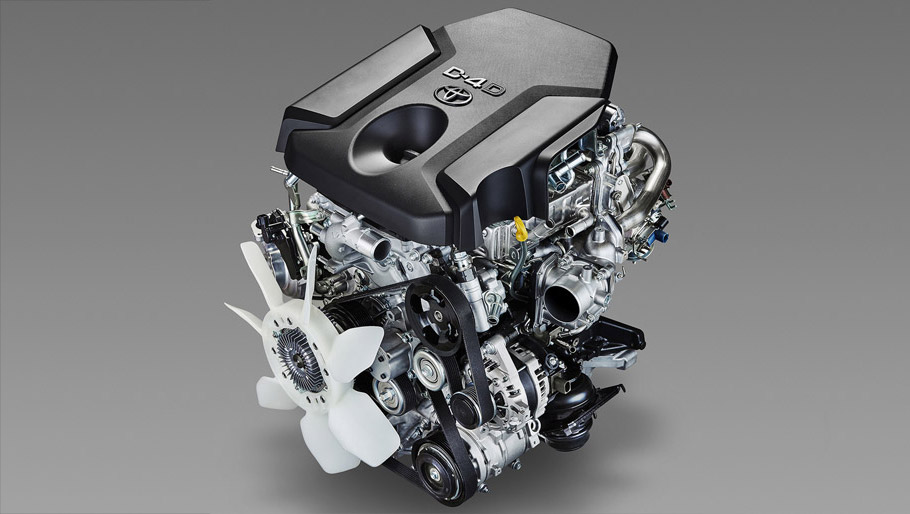Toyota Prado Gets High-Torque Diesel Engine
 Toyota LandCruiser Prado is now more powerful than ever due to the addition of the 2.8-litre Global Diesel (GD) four-cylinder engine. The unit was specifically developed from the ground up to contribute towards the massive gains to the performance of the vehicle. In addition, the engine is also quieter and more efficient, reliable and robust in its operation.
Toyota LandCruiser Prado is now more powerful than ever due to the addition of the 2.8-litre Global Diesel (GD) four-cylinder engine. The unit was specifically developed from the ground up to contribute towards the massive gains to the performance of the vehicle. In addition, the engine is also quieter and more efficient, reliable and robust in its operation.
Power & Torque
The 2.8-litre GD produces up to 177 hp (130kW) at 3400rpm in comparison to the 173 hp (127kW) from the current 3.0-litre turbo-diesel engine. This is a significant gain of 2.4%, given that the capacity of around 200cc is smaller.
LandCruiser's new engine delivers also more torque of up to 450Nm (332 lb-ft). This does not make sacrifice in terms of fuel efficiency. Mated to the six-speed automatic transmission, this gain of 40Nm or more than 9.7 % in comparison to the engine previously used. The peak torque for the five-speed self-shifter or the six-speed manual gearbox stands at 420Nm (310 lb-ft). Despite the transmission, those torques are available from low engine speeds through to 2400rpm.
SEE ALSO: Toyota Unveils Facelifted 2014 LandCruiser Prado [VIDEO]
Fuel Economy & CO2 Emissions
How about the fuel efficiency of the new GD unit? The official combined cycle have been made better with more than 10%, when the car is equipped with the manual gearbox. They have been rated at just 7.9 litres per 100km.
When it comes to the consumption of the vehicle equipped with the automatic transmission, it shows an improvement of 5.9%. During urban driving, improvements range from 10.6% for the auto to more than 13% for the manual while the highway figures are as low as 7 litres per 100km.
2.8-litre Global Diesel (GD) Engine

The 2.8-litre Global Diesel engine has a displacement of 2755cm3. Its common-rail fuel-injection system is electronically controlled and fitted with piezo injectors supporting higher outputs and improved fuel efficiency.
The unit stands under the designation 1GD-FTV and it also shows extreme levels of combustion efficiency due to the adoption of a water-cooled exhaust gas recirculation system, a swirl control valve on the intake manifold and a new piston shape. Low consumption of energy is ensured via weight reduction. This also contributes towards the better fuel economy.
Also helping for this is the low engine friction, because of the adoption of a low-friction timing chain instead of a timing belt. The other benefit here is the minimized mechanical noise during idling. Furthermore, the exhaust manifold has been designed to optimize the retention capacity of the catalytic converter. This prevents the noise that is so characteristic for turbo engines.
All the aforementioned measures and more that we haven't talked about have resulted in lower emissions and compliance with Euro 5 emissions standards. These changes mean not only a more powerful performance but also enhanced driving pleasure for the Prado owners.
Source: Toyota








![Toyota Unveils Facelifted 2014 LandCruiser Prado [VIDEO]](http://www.automobilesreview.com/uploads/2013/09/2014-Toyota-LandCruiser-Prado-BIG.jpg)






